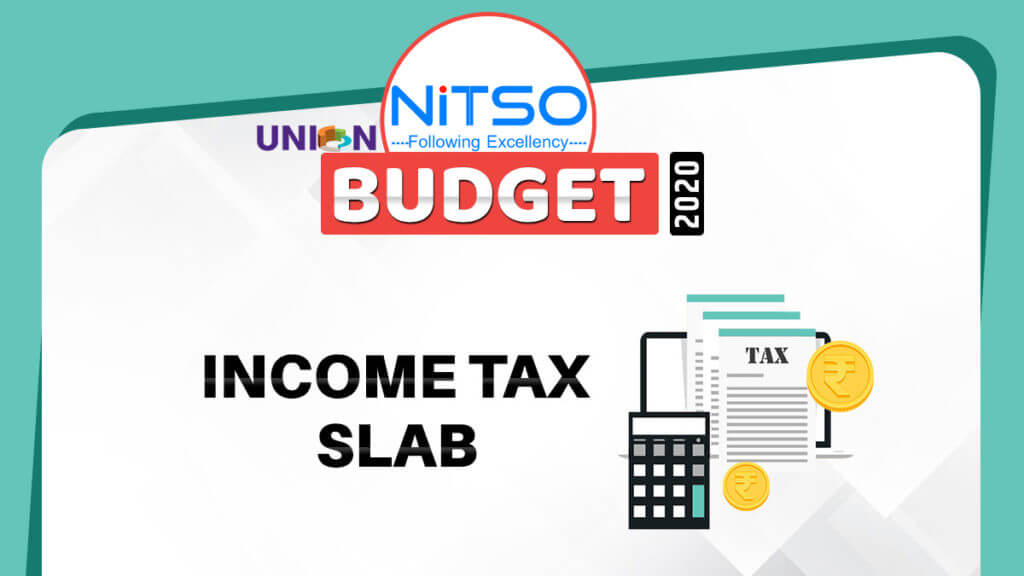Leave encashment is a valuable benefit offered by many organizations that allows employees to convert their accumulated unused leave days into monetary compensation. This article delves into the concept of leave encashment, its benefits, and the tax implications associated with it in India.
Table of Contents
Leave Encashment Meaning
Leave encashment refers to the practice of converting accumulated and unused leave days into monetary compensation. It allows employees to receive financial benefits for the leave days they have not utilized during their employment tenure. This benefit is typically offered by organizations as part of their employee welfare programs and can vary in terms of eligibility and policies.
To avail leave encashment, employees usually need to meet certain criteria, such as completing a minimum duration of service or reaching a specific milestone within the organization. The exact eligibility criteria may vary from company to company and are usually outlined in the organization’s leave policy.
The purpose of leave encashment is to provide employees with the flexibility to monetize their unused leave days. It recognizes the value of their dedicated service and offers a financial reward in return. Employees can choose to encash their leave days as a lump sum payment, which can be helpful in various situations such as covering unexpected expenses, planning vacations, or managing financial obligations.
By comprehending the concept and significance of leave encashment, employees can make informed decisions regarding their accumulated leave days, and organizations can ensure fair and transparent practices that align with their overall compensation and benefits structure.
Benefits of Leave Encashment
Both companies and their employees must grasp the importance of leave encashment. By harnessing these benefits effectively, team members can achieve a more harmonious work-life along with greater economic confidence and overall health improvement. Let’s take a closer look at other notable benefits:
- Financial compensation for unused leave days: Leave encashment allows employees to receive monetary compensation for the leave days they have not utilized. This provides an additional source of income and can be particularly beneficial during times of financial need or when facing unexpected expenses.
- Enhancing work-life balance by promoting time-off: When organizations offer options such as the ability for workers to cash out unused days-off, it acknowledges that employee wellness is important and encourages people who may otherwise not take rest time off. Reducing stress associated with overworking promotes better physical health leading to healthy mental wellbeing subsequently increasing job performance and morale overall.
- Supplementing income during critical situations: Leave encashment can serve as a valuable financial resource during critical situations such as medical emergencies, family obligations, or unforeseen circumstances. The additional funds obtained through leave encashment can provide a safety net and assist employees in managing financial challenges effectively.
- Accumulating leave days for future use or emergencies: While some employees may choose to encash their unused leave, others may prefer to accumulate their leave days for future use or emergencies. Leave encashment provides employees with the flexibility to make this choice based on their individual needs. Accumulated leave days can be utilized for extended vacations, family events, or other personal reasons, ensuring a better work-life integration.
- Employee morale and job satisfaction: Offering leave encashment as part of the employee benefits package demonstrates an organization’s commitment to employee welfare. This can enhance employee morale and job satisfaction, as employees feel valued and rewarded for their dedication and service. The availability of leave encashment can also contribute to attracting and retaining top talent in competitive job markets.
- Financial planning and retirement benefits: Leave encashment can play a significant role in an employee’s financial planning, especially in terms of retirement. By encashing accumulated leave days, employees can contribute to their retirement savings or use the funds to support their post-employment lifestyle. Including leave encashment as a retirement benefit provides employees with an additional avenue for financial security in their later years.
Calculate Leave Encashment With Formula and Example
The leave encashment calculation involves determining the amount that an employee is eligible to receive for their unutilized leaves.
To calculate the leave encashment formula is as follows:
Leave Encashment Amount = (Last Drawn Salary / Total Working Days) x Number of Unutilized Leave Days
Here’s a leave encashment example to illustrate the calculation:
Let’s assume an employee, John, has a last drawn salary of Rs. 50,000 per month and has accumulated 60 unutilized leave days. The company follows a standard of 26 working days in a month.
Step 1: Calculate the employee’s daily salary rate:
Daily Salary Rate = Last Drawn Salary / Total Working Days = Rs. 50,000 / 26 ≈ Rs. 1,923.08
Step 2: Leave Encashment Calculation:
Leave Encashment Amount = Daily Salary Rate x Number of Unutilized Leave Encashment Amount = Rs. 1,923.08 x 60 = Rs. 1,15,384.62
In this example, John’s leave encashment amount would be approximately Rs. 1,15,384.62.
A key point to remember is that calculating leave encashment may vary due to company policies and relevant laws. Moreover, it is essential to consider tax exemptions and limits, coupled with any specific directions given by the employer when working out the final figure.
Online Leave Encashment Calculator
One popular online leave encashment calculator is the “Leave Encashment Calculator” provided by Income Tax Department. This calculator helps individuals estimate the taxable amount and exemptions for leave encashment based on their salary, leave balance, and years of service. It simplifies the leave encashment calculation process and provides accurate results to assist individuals in understanding the potential tax implications of their leave encashment. Another popular online tool is Tax2win.
Article you might be intrested in: Signs and Symptoms of Employee Burnout in the Workplace
Leave Encashment Tax Exemption in India
Leave encashment has certain tax implications that individuals need to be aware of. The tax treatment of leave encashment varies based on factors such as employment status, the nature of employment, and the amount received. Here are the key points to consider:
Applicability of tax on leave encashment
Leave encashment is subject to taxation in India under Section 10(10AA) of the Income Tax Act, 1961. However, certain exemptions are available based on specific conditions and limits.
Tax exemption limits for government and non-government employees
For government employees, the entire amount of leave encashment is usually tax-exempt. However, for non-government employees, the leave encashment exemption is limited to the least of the following three amounts:
- The actual amount received as leave encashment.
- The cash equivalent of unutilized earned leave, calculated as a maximum of 30 days of earned leave for each completed year of service.
- Rs. 25 lakh (as per the revised ceiling; previously it was Rs. 3 lakh).
Calculation of leave encashment tax exemption
To determine the tax exemption on leave encashment, individuals need to calculate the amount falling within the exemption limits mentioned above. If the amount received is below or within the exemption limit, it is not taxable. However, any amount exceeding the exemption limit is subject to income tax.
Important considerations and exceptions
- The leave encashment tax exemption is applicable only on retirement, resignation, or termination of employment. Voluntary encashment of leave while still being employed is taxable as a part of the individual’s salary income.
- Leave encashment received during the period of employment with different employers may be taxed separately based on the exemptions applicable for each employer.
- Tax deductions under Section 80C for investments in specific instruments may not be available on the leave encashment amount.
Seeking professional advice
Given the complexity of tax laws and the evolving nature of regulations, it is advisable to consult a tax professional or refer to the latest tax guidelines issued by the government. This ensures accurate understanding and compliance with the tax implications associated with leave encashment.
Individuals should maintain proper documentation of leave encashment payments and consult tax experts to optimize their tax liabilities while availing the available exemptions. Keeping track of changes in tax regulations and seeking professional advice can help individuals make informed decisions regarding leave encashment and minimize their tax obligations effectively.
What Are the Leave Encashment Rules?
It’s important for employees to be aware of the leave encashment rules specific to their organization and adhere to the guidelines provided. As these rules vary based on the company’s policies and applicable laws in the respective jurisdiction. However, here are some general principles and common rules related to leave encashment:
- Eligibility: Employees may be eligible for leave encashment based on their tenure of service, company policies, and the terms outlined in their employment contract.
- Accumulated Leave Balance: Leave encashment typically applies to the accumulated, unused leave balance that an employee has at the time of retirement, resignation, or termination. The number of days or months that can be encashed may vary.
- Calculation: The calculation of leave encashment amount often involves factors such as the employee’s last drawn salary, the number of unutilized leave days, and any applicable company policies or legal requirements. Specific formulas or guidelines may be followed for accurate calculation.
- Taxation: Leave encashment is subject to taxation in most jurisdictions. The tax treatment may vary based on factors such as the amount received, the employee’s status (government or non-government), and the applicable tax laws. Certain exemptions or tax-free limits may be available for leave encashment, but the exact rules depend on the country’s tax regulations.
- Company Policies: Companies typically have specific policies regarding leave encashment that outline the eligibility criteria, maximum limit, calculation methods, and any additional terms and conditions. Employees should refer to their organization’s leave policy or consult with the human resources department to understand the specific rules applicable to them.
Conclusion
Leave encashment is a valuable perk that provides financial flexibility and promotes work-life balance for employees. However, it is essential to understand the tax implications and applicable limits. Employers should ensure transparent policies and effective communication to facilitate a smooth leave encashment process. By leveraging this benefit wisely, employees can optimize their financial well-being and plan for a secure retirement.
FAQs Related to Leave Encashment
Is leave encashment taxable?
Yes, leave encashment is generally subject to taxation in India under the Income Tax Act, of 1961. However, it is noteworthy that several limitations and exceptions apply concerning cashing in unused vacation days. Such exemptions revolve around the employment nature, payment quantity received as well as whether it amounts from a public or private sector job. Thus, for trustworthy information regarding taxation implications for leave encashment purposes, one should seek advice from taxation professionals or utilize available up-to-date tax guidelines.
Is leave encashment mandatory?
No, leave encashment is not mandatory. It is a benefit that is typically provided by employers as part of their compensation and benefits package. The availability and terms of leave encashment may vary from organization to organization and can be outlined in the company’s leave policy. Employees may choose to avail of leave encashment based on their individual needs and eligibility.
Who is eligible for leave encashment?
Eligibility for leave encashment varies depending on the organization’s policies and the terms outlined in the employee’s contract or leave policy. Generally, employees who have completed a minimum duration of service or have reached a specific milestone within the organization are eligible for leave encashment. However, the exact eligibility criteria can differ from company to company.
Which leaves cannot be encashed?
Typically, leaves that cannot be encashed are those categorized as statutory or protected leaves, which are mandated by law and have specific purposes. For example, leaves taken for medical reasons, maternity/paternity leave, or earned leaves that exceed the maximum limit defined in the company’s leave policy may not be eligible for encashment. Specific regulations and company policies will determine which leaves can and cannot be encashed.
What is the new rule of leave encashment?
Payments received as leave encashment, whether upon retirement or departure from employment, are eligible for exemption under Section 10(10AA)(ii). The exemption amount is determined as the least of the following sums: the actual payment received as leave encashment, the cash equivalent of unutilized earned leave (not exceeding 30 days for each completed year of service), or Rs. 25 lakhs (previously Rs. 3 lakhs). It’s important to note that the ceiling for exemption has been raised to Rs. 25 lakhs from the previous limit of Rs. 3 lakhs.
What is the maximum limit of leave encashment?
The amount received as leave encashment is subject to certain considerations. The maximum amount set by the government is currently Rs. 25,00,000. It is calculated based on the last 10 months of basic salary and DA (Dearness Allowance). The calculation involves multiplying the salary per day by the unutilized leave days, considering a maximum of 30 days of leave per year for each completed year of service.








0 Comments